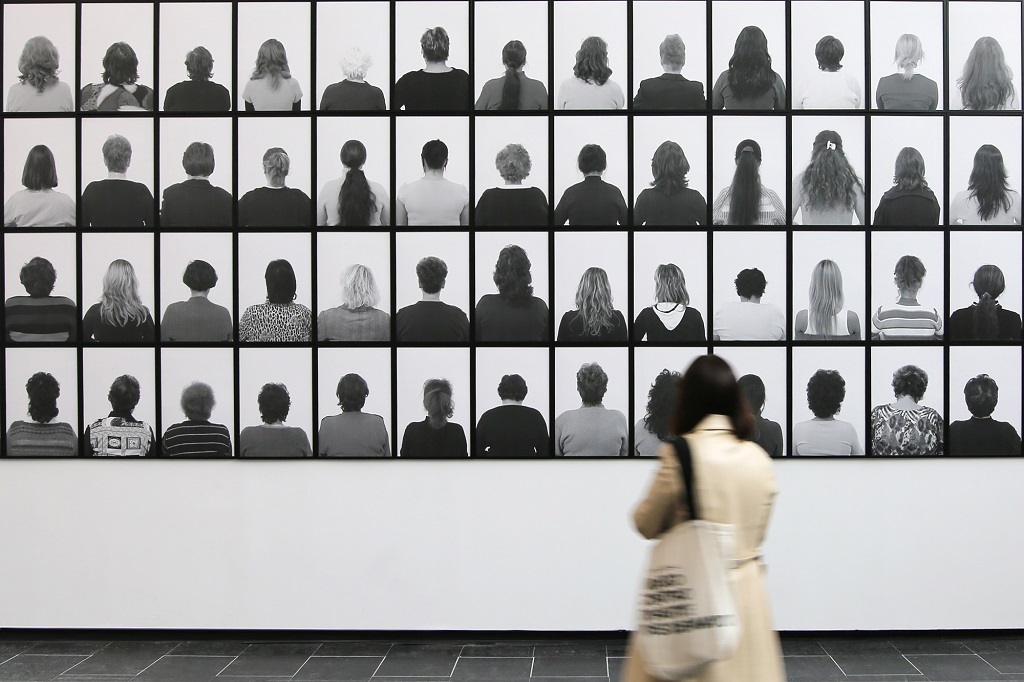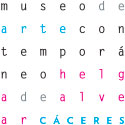- CA2M MUSEUM
- exhibitions
- SANTIAGO SIERRA. 1502 PERSONS FACING THE WALL
SANTIAGO SIERRA. 1502 PERSONS FACING THE WALL

Santiago Sierra, "Persona obstruyendo una línea de containers". Kaj 3 Frinhamnen, Stockholm, Sweden. February 2009. Courtesy of Estudio Santiago Sierra.
Curated by Alexis Callado.
The artistic practice of Santiago Sierra (Madrid, 1966) is characterized by the sharp critical eye he brings to issues like violence, immigration, exploitation, exclusion of the disadvantaged, and war as foundation and norm.
The exhibition 1502 Persons Facing the Wall compiles and analyzes one of Santiago Sierra’s most used resources throughout his career: the capture of images of people facing the wall as “reverse portraits” in which the subject’s identity is denied and annulled. Based on this idea, the exhibition proposes a journey through three decades of work—comprised of historical and more recent works—in which the artist’s ability to imbue with a sense of urgency the formal languages of minimalism, conceptual art, and the performance art of the 1960s and 1970s is made evident.
Sierra manages to update these aesthetics, denouncing through them the “necropolitics” developed in the socio-economic structures of exploitation and the processes of subjugation, especially in contexts of war, colonialism, and racism; and, not least, to encourage the involvement and use of social conscience in contemporary aesthetic contents and discourses. Thanks to this synthesis between minimalism and action art, the artist transfers social tensions and ethical responsibilities to the exhibition space, unfolding a (re)presentation of the human body that focuses on complex and cruel situations. The viewers are challenged by the radical nature of the proposals, which force them to reflect and debate on questions as difficult as they are inescapable.
The works selected for the exhibition show how the contradictions of capitalism are also transferable to the dynamics of the field of art, avoiding any rhetoric or mystifying resource and thus producing an unappealable “situation of the world.” As Sierra himself points out, “There is little room here for ambiguity or the viewer’s imagination.” There is not much to interpret; the viewer feels interpellated, confronted crudely with his or her own exploitative condition through the gaze.
There are very few contemporary artists who antagonize the gear of aesthetic, ethical, political, and economic parameters of today’s societies as Santiago Sierra does. Art, even with a stained face, is one of the last fronts of resistance against annihilation. Let’s talk about it, even if it is unpleasant. To remain silent is worse; all silenced truths become poisonous.
SANTIAGO SIERRA
After earning a degree in Fine Arts from the Universidad Complutense de Madrid, he furthered his artistic training in Hamburg, where he studied with professors F. E. Walter, S. Brown and J. Blume. Early on, he was associated with alternative artistic circuits in Madrid—El Ojo Atómico Espacio P—although he has spent much of his career in Mexico (1995–2006) and Italy (2006–2010). His work has been very influential on literature and art criticism and strives to reveal the perverse networks of power that lead to worker alienation and exploitation, injustice and violence, the wealth disparities caused by capitalism, the misalignment between work and money and racial discrimination in a world of one-way (south-to-north) migratory movements. By revisiting and reinterpreting certain strategies that characterised the minimalistic, conceptual and performance art of the 1960s and 1970s, Sierra interrupts the flows of capital and goods (Obstruction of a Freeway with a Trucks Trailer[AS1] , 1998; Person Obstructing a Line of Containers, 2009), hires workers to reveal their precarious circumstances (20 Workers in a Ship’s Hold, 2001), explores the mechanisms of racial segregation stemming from economic inequalities (Hiring and Arrangement of 30 Workers in Relation to their Skin Colour, 2001; Economic Study on the Skin of Caracans[AS2] , 2006) and refutes the stories that legitimise democracy based on state-sponsored violence (Veterans of the Wars of Cambodia, Rwanda, Kosovo, Afghanistan and Iraq Facing the Corner, 2010-2012; Those in Charge[AS3] , 2012).
He has shown his works at important museums, art centres and galleries all over the world, like the Museum of Contemporary Art Kiasma ARS 01 (Helsinki), the Kunst-Werke (Berlin), the Kunsthaus Bregenz (Austria), MoMA’s PS1 (New York), Artium (Vitoria) and PAC Padiglione d’Arte Contemporánea (Milan). His works are also represented by major galleries like Helga de Alvear (Madrid, Spain), Prometeogallery (Milan, Italy), Labor (Mexico) and KOW (Berlin, Germany).
ALEXIS CALLADO
He holds a degree in Art History from the University of Havana. His curatorial practice includes individual exhibitions with Carlos Pazos (La Casa Encendida, Madrid; Centro de Desarrollo de las Artes Visuales, Havana), as well as group shows (Ante nuestros ojos, Loop Festival, Barcelona; Culto Digestivo, Conarte, Monterrey[AS4] ) and collaborative projects, like Lab Latino, Bienal XVIII de Arte Paiz, Quetzaltenango, Guatemala. He actively promotes exchanges among the art scenes in Spain and Latin America. He chose, coordinated and produced publications of graphic works, photographs and sculptural objects for the Madrid-based company Arte y Naturaleza. He has organised artistic projects in Sweden, Spain, France, Guatemala, Mexico, Argentina, Chile and Cuba. He collaborates with publications, museums, associations and centres specialising in contemporary art, and he is a member of the Transatlantic Network and a co-founder of The Curatorial Bureau.
With the support of Museo Helga de Alvear, Cáceres

